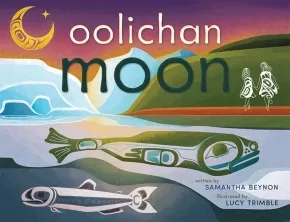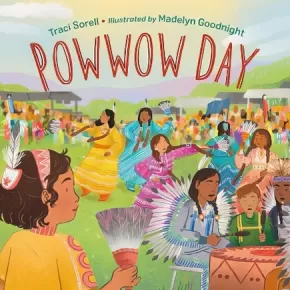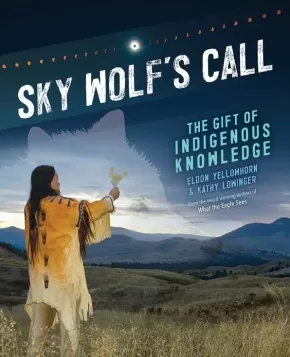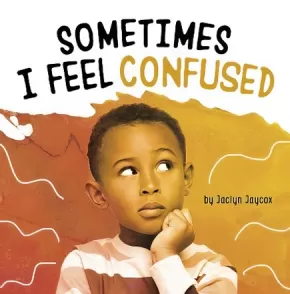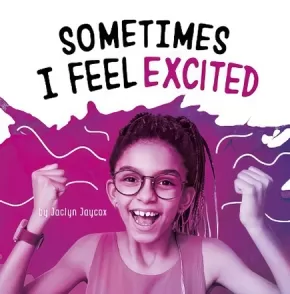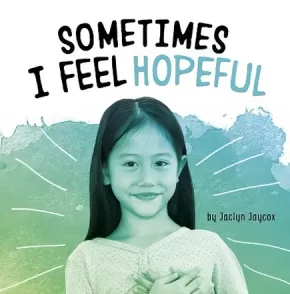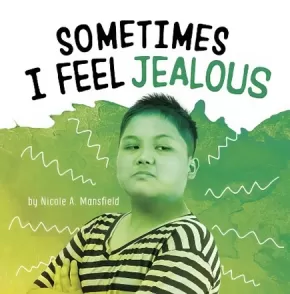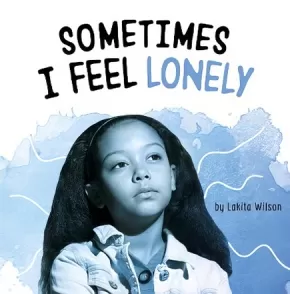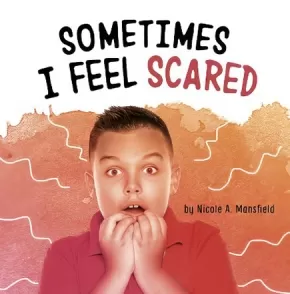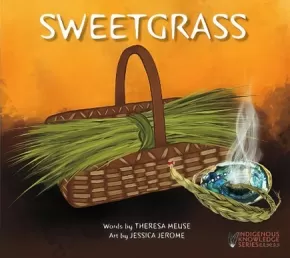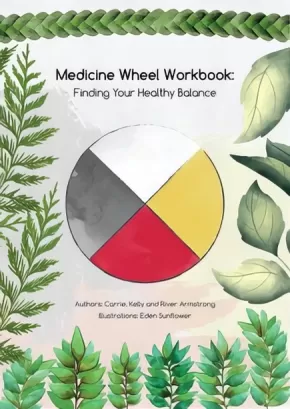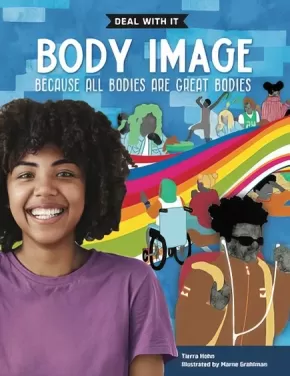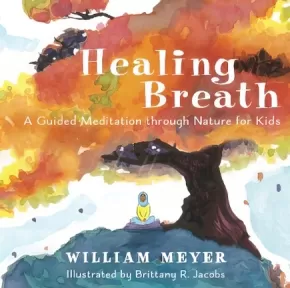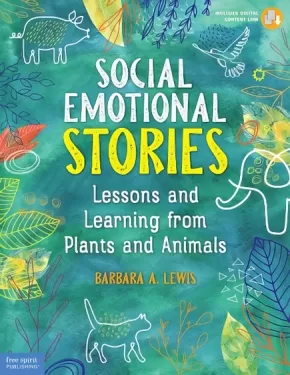
Health
31
-
45
of
77 Results;
Sort By
Go To
of 6
Oolichan Moon
$24.95
Artists:
Format:
Hardcover
Text Content Territories:
Indigenous Canadian; First Nations; Nisga'a;
ISBN / Barcode: 9781550179927
Synopsis:
Synopsis:
Oolichan Moon is a beautifully illustrated children’s book about passing down traditional knowledge from Nisga'a Elders and the sacredness of traditional foods, particularly the oolichan fish.
Together, author Samantha Beynon and illustrator Lucy Trimble have created a children’s book rich with cultural knowledge and tradition that relates to their Nisga'a ancestry surrounding the oolichan fish.
With playful text and vibrant illustrations, young readers can learn alongside the two Nisga'a sisters as they are gifted with sacred knowledge from their Elders, passed down for many generations in the oral tradition.
A gorgeous celebration of Nisga'a language, history and culture, Oolichan Moon also includes historical and cultural information about the oolichan fish and related Nisga'a vocabulary.
Awards
- 2023 Indigenous Voices Awards Winner: Published Graphic Novels, Comics and Illustrated Books
Reviews
"Oolichan Moon is a wonderful story with such simple teachings for all of us. The oolichan were so important for many people of the rivers. The long winter is over, and Spring is here and so too the oolichans return to feed and provide for the people. Today, we still fish for the Oolichan but like most fish of the river their numbers are low. This story teaches all of us that we must only take what is needed and that we should always give something back. This is survival. This is the teaching." — Joseph Dandurand, storyteller and author of A Magical Sturgeon and The Sasquatch, the Fire
"Samantha Beynon and Lucy Trimble have created a beautiful, heart-warming story featuring a nutritious and iconic little fish of the Northwest Coast. Since time immemorial, oulachens have served as a food and esteemed condiment for the Nisga’a Peoples of the Nass Valley and for many other coastal First Nations from Alaska to the Columbia River. Through the delightful teachings of wise and kind grandparents, the granddaughters—and we, as readers—are able to learn about oulachens and their immense cultural value. We learn how and when they are caught, and how they are prepared, and especially how they are rendered into a nutrient-rich and highly valued oil. At the same time, we experience “history, laughter, and love,” and gain insights into the deep and lasting relationships that Indigenous Peoples have developed with the fish and other species of their homelands and how children and youth are taught about these profound connections. The illustrations are stunning." — Nancy Turner, Professor Emeritus, University of Victoria, and author of Plants of Haida Gwaii
“I had a little tear welling up in my eye as I thought how cool it will be for kids to be reading about part of their culture. This kind of story is long overdue and badly needed. I hope it is the first of many.” — Edward Desson, fisheries manager, Nisga’a Fisheries and Wildlife, Nisga’a Lisims Government
"Packed with traditional knowledge, family values and deep wisdom, this story instantly transports you to a timeless place! Like visiting with family, you can feel strength and warmth beaming from each page." — Lucky Budd, author of Peace Dancer and One Eagle Soaring
Educator Information
Recommended for ages 3 to 6.
This is the first book in the Sisters Learn Foods of the Elders series.
Additional Information
32 pages | 11.00" x 8.50" | Hardcover
Powwow Day (HC) (9 in Stock)
$21.99
Artists:
Format:
Hardcover
Text Content Territories:
Indigenous American; Native American;
ISBN / Barcode: 9781580899482
Synopsis:
Synopsis:
In this uplifting, contemporary Native American story, River is recovering from illness and can't dance at the powwow this year. Will she ever dance again?
River wants so badly to dance at powwow day as she does every year. In this uplifting and contemporary picture book perfect for beginning readers, follow River's journey from feeling isolated after an illness to learning the healing power of community.
Additional information explains the history and functions of powwows, which are commonplace across the United States and Canada and are open to both Native Americans and non-Native visitors.
Awards
- 2023 Wyoming Buckaroo Award
Reviews
"A heartwarming picture book about the roles of courage, culture, and community in the journey of personal healing." —Kirkus Reviews
"A resonant, hopeful tale about the healing power of community and tradition" —Publishers Weekly
Educator Information
Recommended for ages 4 to 8.
Additional Information
32 pages | 9.44" x 9.31" | Hardcover
Sky Wolf's Call: The Gift of Indigenous Knowledge
$16.95
Format:
Paperback
Text Content Territories:
Indigenous Canadian; Indigenous American;
ISBN / Barcode: 9781773216294
Synopsis:
Synopsis:
From healing to astronomy to our connection to the natural world, the lessons from Indigenous knowledge inform our learning and practices today.
How do knowledge systems get passed down over generations? Through the knowledge inherited from their Elders and ancestors, Indigenous Peoples throughout North America have observed, practiced, experimented, and interacted with plants, animals, the sky, and the waters over millennia. Knowledge keepers have shared their wisdom with younger people through oral history, stories, ceremonies, and records that took many forms.
In Sky Wolf’s Call, award-winning author team of Eldon Yellowhorn and Kathy Lowinger reveal how Indigenous knowledge comes from centuries of practices, experiences, and ideas gathered by people who have a long history with the natural world. Indigenous knowledge is explored through the use of fire and water, the acquisition of food, the study of astronomy, and healing practices.
Reviews
"An authoritative tribute to Indigenous knowledge systems that's a must-have for every library and classroom." - Kirkus Reviews
“Sky Wolf’s Call has an astoundingly broad scope introducing Indigenous Traditional Ecological Knowledge (TEK) in North America from time immemorial to the current day … This fast paced celebration of Indigenous innovation and technology is riveting.” - The British Columbia Review
Educator Information
Interest Age: 11+
Grade: 6+
Reading Age: 11+
A Junior Library Guild Gold Standard Selection
Table of Contents
Author’s Note
1: Sky Wolf’s Call: The Gift of Indigenous Knowledge: Foundational ideas behind Indigenous Knowledge and the importance of retaining, maintaining, and learning this sacred knowledge.
2: Water Knowledge Ways: Water links us all and is sacred. Indigenous people have fought to protect the gift of water from harm, and the critical role it has played in transportation, agriculture, irrigation, and food.
3: Fire and Smoke Knowledge: Fire and smoke are great gifts, including the burning of tobacco. In sacred ceremonies, smoke connects our breath with the heavens. Fire cooks our food, helps grow our crops, and even keeps our waters clean. Cultural burns are used to benefit the land.
4: Indigenous Knowledge and Food Security: Sharing, growing, and receiving food with family, community, and visitors is both an honour and a tradition. By understanding the traditional practices of salmon fishing, clam gardens, planting and harvesting certain crops, or hunting buffalo, Indigenous Peoples have respected what Mother Earth has to offer.
5: Healing Knowledge Ways: The use of the medicine wheel and the sweat lodge have been used over centuries and still help sick and troubled people. Games such as lacrosse and chunkey have helped in building individual strength and community spirit. And braiding together Indigenous healing and western science has opened new learning opportunities.
6: Sky Knowledge: From the earliest Indigenous astronomers to modern astrophysicists, these sky watchers have studied the sacred gifts of the sky: the sun, moon, planets, and stars that have produced maps, calendars, beliefs about how to govern, and even directions for building homes.
7: Keeping the Knowledge: Indigenous People hold oral narratives in high esteem because that was the way knowledge passed from one generation to the next. People in North America recorded important events with symbols, pictographs (paintings), and petroglyphs (carvings). Language Keepers and Knowledge keepers are making sure that Indigenous knowledge is never forgotten.
8: Sky Wolf’s Call: Indigenous knowledge is based on the idea that this world is a gift. Understanding the idea of connections (the skies with the earth, people with animals, the practical with the spiritual) is an important lesson with the challenges of climate change, pandemics, and wars. The wisdom of Indigenous Knowledge can help the whole world.
Thanks and Acknowledgments
Glossary
Selected Reading
Sources and Contacts
Additional Information
120 pages | 7.50" x 9.25" | Paperback
Sometimes I Feel Confused
$10.99
Format:
Paperback
ISBN / Barcode: 9781666326116
Synopsis:
Synopsis:
What does it mean to be confused? Confusion may not make us feel good, but it's an emotion everybody has! Children will learn how to identify when they are confused and ways to manage their feelings. Large, vivid photos help illustrate what confusion looks like. A mindfulness activity will give kids an opportunity to explore their feelings.
Educator & Series Information
Recommended for ages 5 to 8.
This book is part of the Name Your Emotions series.
Additional Information
24 pages | 8.00" x 8.00" | Paperback
Sometimes I Feel Excited
$10.99
Format:
Paperback
ISBN / Barcode: 9781666325874
Synopsis:
Synopsis:
What does it mean to be excited? Everyone feels excited sometimes! Children will learn how to identify when they are excited and ways to manage their feelings. Large, vivid photos help illustrate what excitement looks like. A mindfulness activity will give kids an opportunity to explore their feelings.
Educator & Series Information
Recommended for ages 5 to 8.
This book is part of the Name Your Emotions series.
Additional Information
24 pages | 8.00" x 8.00" | Paperback
Sometimes I Feel Hopeful
$10.99
Format:
Paperback
ISBN / Barcode: 9781666325959
Synopsis:
Synopsis:
What does it mean to be hopeful? Feeling hopeful is an emotion everybody has! Children will learn how to identify when they are hopeful and ways to manage their feelings. Large, vivid photos help illustrate what hopefulness looks like. A mindfulness activity will give kids an opportunity to explore their feelings.
Educator & Series Information
Recommended for ages 5 to 8.
This book is part of the Name Your Emotions series.
Additional Information
24 pages | 8.00" x 8.00" | Paperback
Sometimes I Feel Jealous
$10.99
Format:
Paperback
ISBN / Barcode: 9781666325478
Synopsis:
Synopsis:
What does it mean to be jealous? Jealousy may not make us feel good, but it's an emotion everybody has! Children will learn how to identify when they are jealous and ways to manage their feelings. Large, vivid photos help illustrate what jealousy looks like. A mindfulness activity will give kids an opportunity to explore their feelings.
Educator & Series Information
Recommended for ages 5 to 8.
This book is part of the Name Your Emotions series.
Additional Information
24 pages | 8.00" x 8.00" | Paperback
Sometimes I Feel Lonely
$10.99
Format:
Paperback
ISBN / Barcode: 9781666326031
Synopsis:
Synopsis:
What does it mean to be lonely? Loneliness may not make us feel good, but it's an emotion everybody has! Children will learn how to identify when they are lonely and ways to manage their feelings. Large, vivid photos help illustrate what loneliness looks like. A mindfulness activity will give kids an opportunity to explore their feelings.
Educator & Series Information
Recommended for ages 5 to 8.
This book is part of the Name Your Emotions series.
Additional Information
24 pages | 8.00" x 8.00" | Paperback
Sometimes I Feel Scared
$10.99
Format:
Paperback
ISBN / Barcode: 9781666326192
Synopsis:
Synopsis:
What does it mean to be scared? Being scared may not make us feel good, but it's an emotion everybody has! Children will learn how to identify when they are scared and ways to manage their feelings. Large, vivid photos help illustrate what being scared looks like. A mindfulness activity will give kids an opportunity to explore their feelings.
Educator & Series Information
Recommended for ages 5 to 8.
This book is part of the Name Your Emotions series.
Additional Information
24 pages | 8.00" x 8.00" | Paperback
Sweetgrass
$12.95
Artists:
Format:
Paperback
Text Content Territories:
Indigenous Canadian; First Nations; Mi'kmaq;
ISBN / Barcode: 9781771089333
Synopsis:
Synopsis:
A modern story of traditional Indigenous knowledge that follows a young boy and his Auntie as they gather and braid sweetgrass, one of the four sacred medicines.
It's early July, and for Matthew and his Auntie that means one thing: time to go sweetgrass picking. This year, Matthew's younger cousin Warren is coming along, and it will be his first time visiting the shoreline where the sweetgrass grows.
With Auntie's traditional Mi'kmaw knowledge and Matthew's gentle guidance, Warren learns about the many uses for sweetgrass—as traditional medicine, a sacred offering, a smudging ingredient—and the importance of not picking more than he needs. Once the trio is back at Auntie's house, she shows the boys how to clean and braid the grass.
From the duo behind the bestsellers The Gathering and The Sharing Circle, this heartfelt story about the gifts we receive from Mother Earth and how to gather them respectfully offers thoughtful insight into a treasured Mi'kmaw tradition.
Sweetgrass grows in wet meadows, low prairies, and the edges of sloughs and marshes. It grows from Labrador to Alaska, south to New Jersey, Indiana, Iowa, New Mexico, and Arizona. Widely used by North American Indigenous Peoples from many different Nations, it is also considered one of the "four sacred medicines" by many Plains Indians.
Educator & Series Information
Recommended for ages 4 to 7.
This book is part of the Indigenous Knowledge Series.
This book is available in French: Foin d'odeur
Additional Information
32 pages | 9.00" x 8.00" | Paperback
FLASH SALE! Medicine Wheel Workbook: Finding Your Healthy Balance
$15.00 $19.99
Artists:
Format:
Paperback
Text Content Territories:
Indigenous Canadian;
ISBN / Barcode: 9781989122778
Synopsis:
Synopsis:
Many Indigenous cultures on Turtle Island recognize the Medicine Wheel as a sacred symbol. The Medicine Wheel has four equal areas; black, white, red and yellow. These areas represent the four directions, four seasons, four elements, four stages of life and four sacred plants. The Medicine Wheel represents unity and balance between all things, including living a healthy life mentally, spiritually, emotionally, and physically. By understanding the teachings of the Medicine Wheel we can gain a deeper understanding of our holistic health.
Through a careful selection of teachings, followed by interactive activities, the Medicine Wheel Workbook: Finding Your Healthy Balance will encourage children to live well and find their healthy balance. This workbook can be used as a teacher resource in your classroom or by parents teaching their children at home. Lessons and activities may be photocopied to use within your classroom or home.
Educator Information
Publisher recommends this work for grades 2 to 7. Activities are adaptable.
This book is available in French: Cahier d'exercices la roue medicinale: Trouve un equilibre sain
Additional Information
74+ pages | 8.50" x 11.00"
Body Image: Deal with it because all bodies are great bodies
$24.95
Artists:
Format:
Hardcover
ISBN / Barcode: 9781459414532
Synopsis:
Synopsis:
Too fat, too thin. Muffin top, flat bum, thunder thighs, spaghetti arms. From an early age, kids learn they are judged for how they look. Both boys and girls are bombarded with messages of what they should look like and are shamed for not measuring up. When kids encounter conflict based on stereotypes of body image, they need the understanding and the tools to deal with the situation and not let it damage their self-esteem. This book provides information, relatable situations and opportunities for kids to explore cultural standards, their own assumptions and those of others.
This accessible illustrated book offers information, quizzes, comics and real-life situations to help kids think critically about body image, how it influences how others see them and how they see themselves. Considered from the viewpoints of the Internalizer, who suffers from body-image issues, the Influencer, who perpetuates negative stereotypes and standards of body image and the Witness, with conflicts around body image, this issue is identified, examined and put into a context kids can use to navigate issues of shaming and self-esteem.
Educator & Series Information
Recommended for ages 9 to 14.
The Deal With It series helps adolescents cope with conflicts in everyday life and promote peaceful homes, schools, and communities.
Additional Information
32 pages | 8.50" x 11.02"
Healing Breath: A Guided Meditation through Nature for Kids
$26.50
Artists:
Format:
Hardcover
ISBN / Barcode: 9781608687466
Synopsis:
Synopsis:
A gorgeously illustrated guided meditation to calm and soothe as well as inspire and empower us to act on behalf of the natural world.
Join the award-winning team of writer and teacher Bill Meyer and illustrator Brittany R. Jacobs on a guided meditation journey through rich, colorful landscapes spanning the globe. Breathe into the experience of waves on the ocean, trees in a forest, and the warmth of a desert, and feel your connection to all of life, from barnacles to baboons to falcons to farmers. This magical meditation-in-a-book is ideal for anyone who wants to simultaneously calm down and rise up to the world in all its wonders.
Reviews
"This guided meditation begins with a comforting note from the author validating climate anxiety and other concerns. According to this opening text, the purpose of the book is to help readers cope with worry “about the future of our planet,” which will, in turn, “empower” them to take action.... The book’s illustrations are striking and feature characters with diverse skin tones and hair textures, including one dark-skinned child who wears hijab. The words are lyrical and comforting, and the images that the meditation conjures are both kid friendly and relaxing." - Kirkus Reviews
Additional Information
32 pages | 9.00" x 9.00" | Hardcover
Mino-te-mah-ti-zee-win, A Good Way of Life Colouring Book
$14.95
Artists:
Format:
Paperback
Text Content Territories:
Indigenous Canadian;
Grade Levels: Kindergarten; 1;
ISBN / Barcode: 9781927849705
Synopsis:
Synopsis:
The National Indigenous Diabetes Association (NIDA) envisions diabetes-free communities. Their mission is to lead the promotion of healthy environments and to prevent and manage diabetes by working together with people, communities, and organizations. NIDA Elders partnered with Kayla Perry, registered dietitian with the Diabetes Integration Project, and the Manitoba First Nations Education Resource Centre (MFNERC) to present this colouring book, which features some traditional plants and animals (Our Relations) from our Elders’ territories and the lands in between.
The purpose of this colouring book is to provide an easy-to-read, visual resource with practical guidance that children and caregivers can use to learn about nutritional information from traditional foods and plants. This resource also shares some teachings and stories attached to these medicines. Traditional foods are plants or animals that are indigenous to the land, meaning they existed naturally on the land before settlers arrived. Food in the form of these plants, fruits, vegetables, or animals is a gift.
NIDA would like to acknowledge that the work for this project took place in the traditional territories of the Dakota, Anishinaabe, Cree, Ojibwe-Cree, and Dene Peoples, and the homeland of the Red River Métis Nation.
Educator Information
Recommended by the publisher for grades 1 and under.
Social Emotional Stories: Lessons and Learnings from Plants and Animals
$54.50
Format:
Paperback
ISBN / Barcode: 9781631985140
Synopsis:
Synopsis:
This resource for educators makes social emotional learning fun and engaging with 24 ready-to-use lessons about phenomenal plants and astonishing animals.
Storytelling is a learning device used by humans for centuries, and for good reason: storytelling is one of the best ways to increase critical thinking skills and social emotional learning (SEL). Social Emotional Stories combines storytelling with thought-provoking lessons and activities to help elementary students improve their self-esteem, increase their engagement with school, and give them a sense of empowerment.
The book contains 24 individual lessons that include:
- An SEL objective with specific keywords like “inner strength,” “problem solving,” and “responsibility”
- An engaging story that focuses on a distinctive quality of either a plant (like the inner strength of bamboo) or an animal (like the courage of a pig)
- Multiple activities that are quick, easy, and require few supplies to help kids identify and dive deeper into the specific SEL concepts represented
Educators can use these lessons individually with students, in small groups, or with an entire class. The lessons are interdisciplinary and flexible, with only minimal prep time required, allowing educators to adapt them for their situation. Extensive digital content supports the lessons with reproducible forms and a full-color photo of each plant and animal.
Reviews
“Lewis introduces fascinating aspects of the natural world—its constructive and destructive power—to young students in a way that reaches beyond knowledge acquisition. She shows teachers how to build bridges to the inner worlds of children with analogical thinking, reflective questions, and thoughtful conversations that nourish not only their understanding but their agency. If you want to use learning as a way to develop your students’ character, intrinsic motivation, and an ethically grounded relationship with the world, this is the guide you need.”—Diane Stirling
“Barbara Lewis weaves factual information with down-to-earth, applicable activities and discussions to encourage students’ appreciation for nature, while building their power to observe and to understand people and their world as multidimensional. Throughout, Lewis is respectful of children’s capacity to discuss important issues and form their own opinions.”—Silvia Blitzer Golombek
“Another delightful book from Barbara Lewis, Social Emotional Stories is filled with fascinating depictions and insightful analogies to support character development. We recommend Barbara Lewis’s books to all the families who seek our services. Believing that children can make a difference, Lewis provides the inspiration for helping others, taking a stand against injustice, squelching rumors, and seeing beyond stereotypes. This book should be a staple in every school’s social-emotional learning curriculum.”—Linda Kreger Silverman, Ph.D., licensed psychologist, director of the Gifted Development Center
Educator Information
Recommended for grades 2 to 5.
Additional Information
176 pages | 8.50" x 11.00"
Sort By
Go To
of 6

